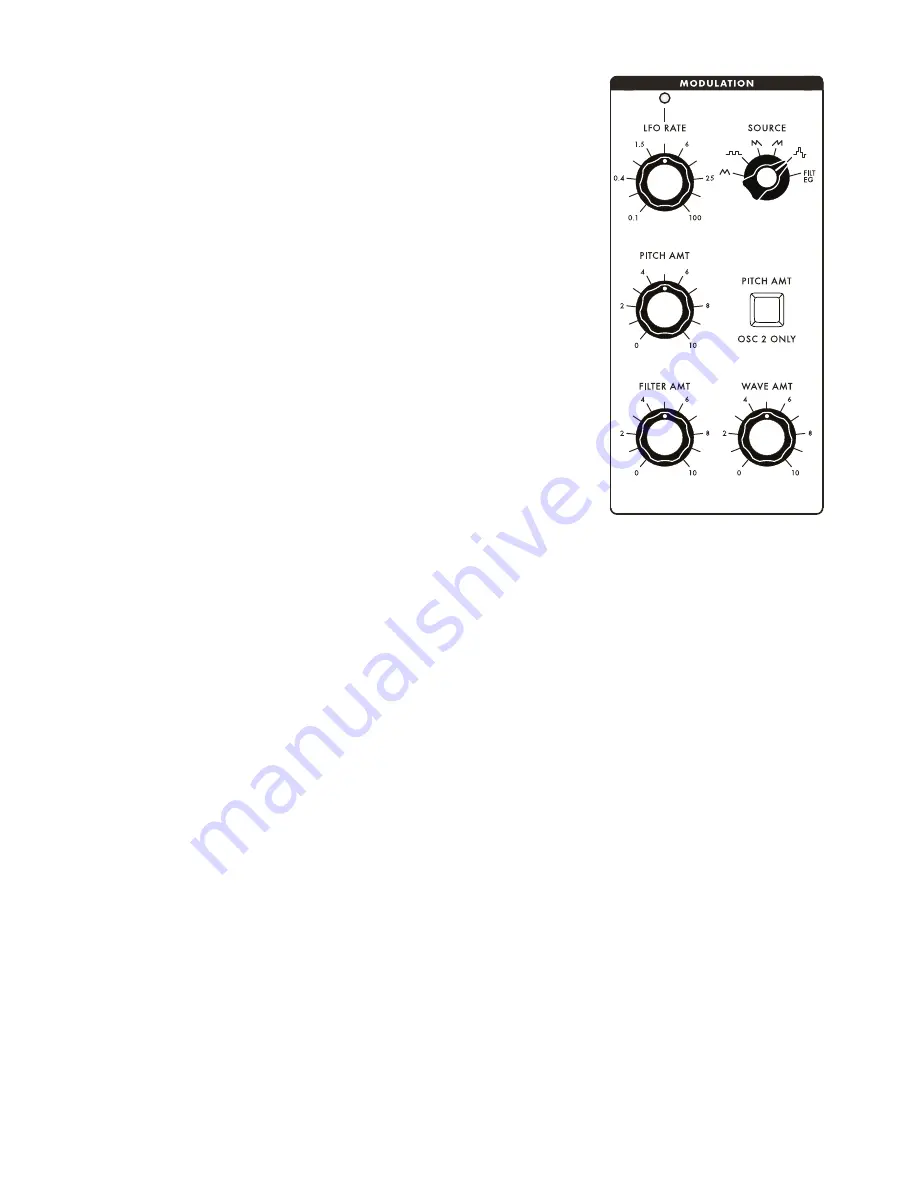
20
MODULATION
OVERVIEW
Controlling modulation (abbreviated as mod) is an important
aspect of programming and playing synthesizers. When you
modulate a synth’s audio signal, you’re changing something
about the way it sounds. When you modulate a control signal,
you’re changing something about its effect on whatever
it’s controlling. Synthesizers route their control signals from
modulation sources to modulation destinations. On the Sub
Phatty, a changing control signal can modulate pitch, filter
cutoff, and waveform shape. You control the modulation
signal’s depth using the
MOD
wheel immediately to the left of
the keyboard.
All LFOs generate repeating waveforms in the sub-audio
range. The Sub Phatty’s LFO has an extended range capable
of generating audio frequencies as well. At sub-audio rates,
the LFO is useful for generating repeating effects. At audio
rates, the LFO adds harmonic complexity to its destination.
When an LFO modulates oscillator frequency, the oscillator’s
pitch follows the shape of the modulating waveform. If the
LFO’s output is a triangle wave, the pitch rises and falls at
a regular rate. At the proper rate and depth, this type of
modulation is called vibrato. Many performers rely on
vibrato to add expression to their performances. A violinist or guitarist employs vibrato with a
shaking motion of the hand as it applies pressure to the string. A singer subtly fluctuates vocal pitch.
A synthesist uses an LFO to modulate oscillator frequency. The
LFO RATE
knob controls the rate of
modulation, and the mod wheel controls its depth.
MODULATION CONTROLS
LFO RATE:
By default, this knob varies the low-frequency oscillator’s modulation rate from 0.1Hz (one
cycle every 10 seconds) to 100Hz (100 cycles per second). You can change this range in Shift mode
(see Hidden Parameters on pg. 28).
SOURCE:
Use this knob to specify whether the mod source is the LFO or the filter envelope, as well
as the LFO waveform. At its counterclockwise position, the LFO generates a triangle wave, which is
particularly useful for vibrato. Turning the knob clockwise, the next position generates a square wave,
which is useful for performing trills and tremolo effects. The next two positions generate sawtooth and
ramp (reverse sawtooth) waves. Applied to pitch, sawtooth-wave modulation is useful for simulating
alarms, ray guns, and other ascending and descending effects.
The fifth position uses sample-and-hold as a mod source. Without going into a lot of technical
explanation, think of sample-and-hold as a source of random control signals.
The
SOURCE
knob’s most clockwise position, labeled
FILTER EG
, bypasses the LFO and routes the
filter’s envelope to the modulation destinations, which are determined by the settings of the
PITCH
AMT, FILTER AMT
, and
WAVE AMT
knobs below.
PITCH AMT:
Use this knob to specify the depth of pitch variation applied to the oscillators when the
MOD
wheel is engaged. If the mod source is the filter envelope, you can control changes in pitch using
the envelope’s attack, decay, sustain, and release settings.






























